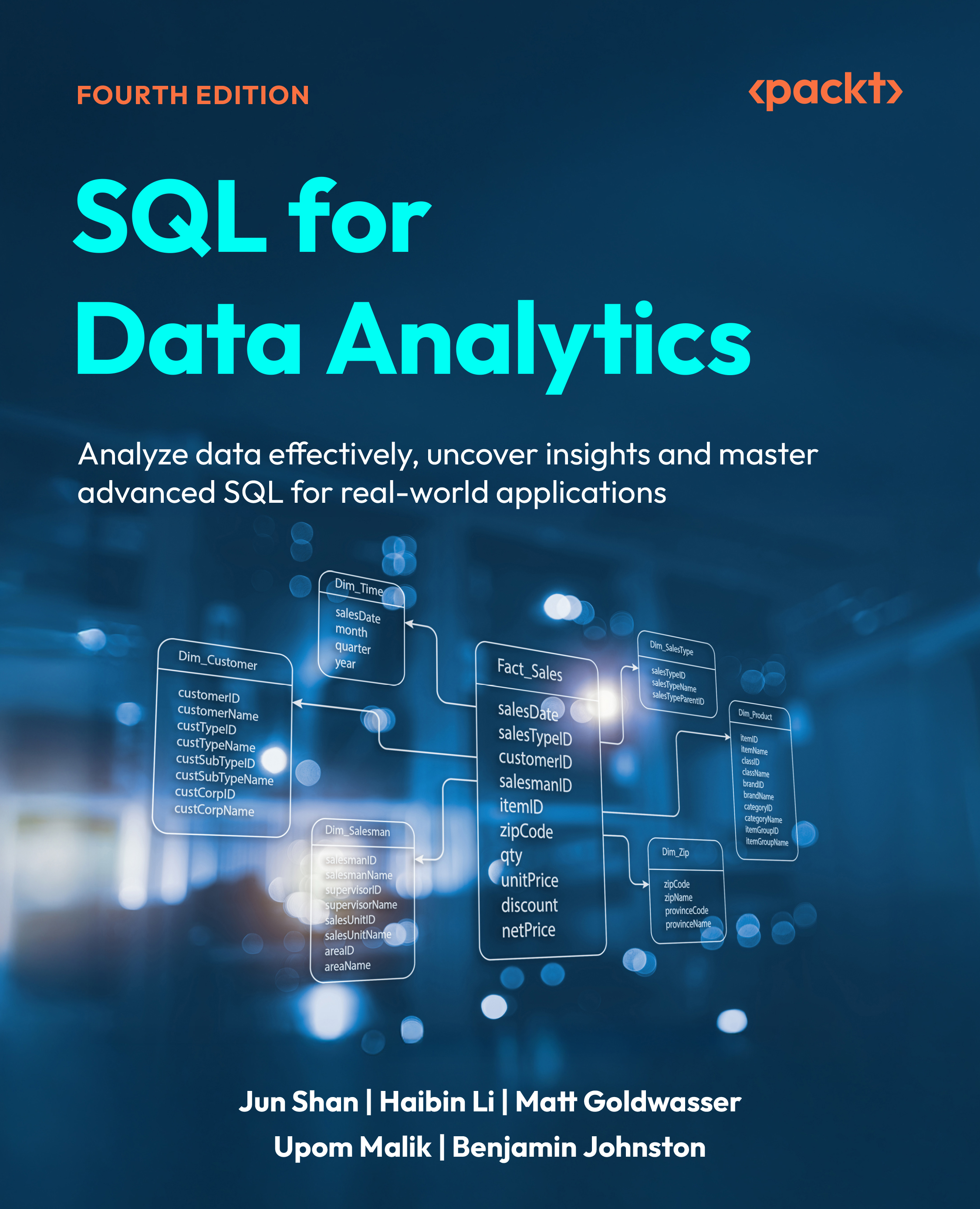Creating Tables with Solid Structures
Most of the operations in a relational database are organized around tables and the data inside them. The operations in the lifecycle of data generally can be categorized into four groups—create, read, update, and delete, or CRUD. To utilize any data, you must create the definition of the table first, then populate the table with data records. Once a dataset is created, you can read all aspects of information from it. If there is any need to change the data, you need to update the affected records. After the update operation, you may need to read the updated data again. And finally, when you do not need the data anymore, you will want to delete the records to save storage costs and increase performance. If you do not need this dataset, you can even delete the whole dataset by removing its definition from the database. These CRUD operations are the most common data management activities, and are demonstrated in the following figure...

































































